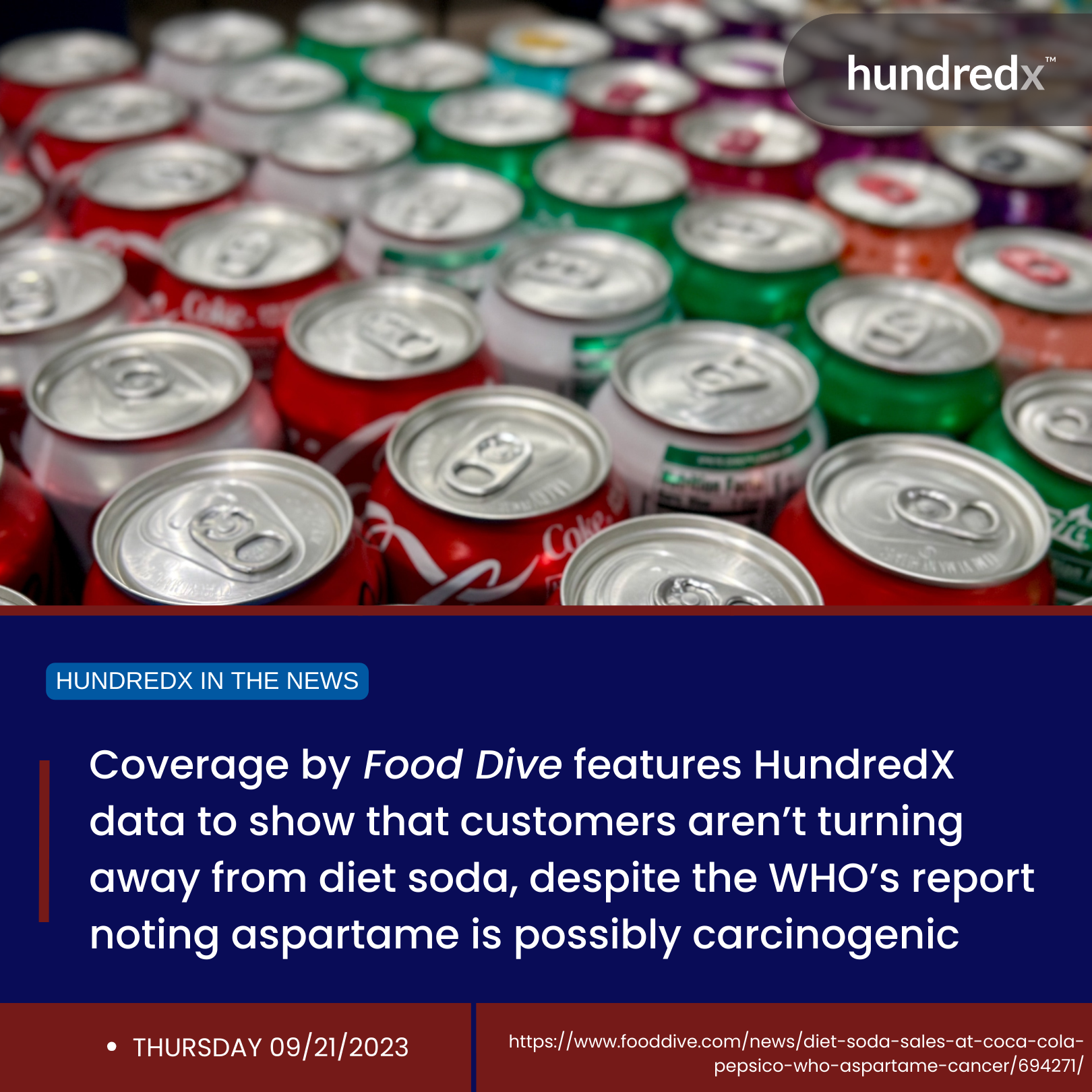Cost-Effective Choices: Adapting to the New Food Economy
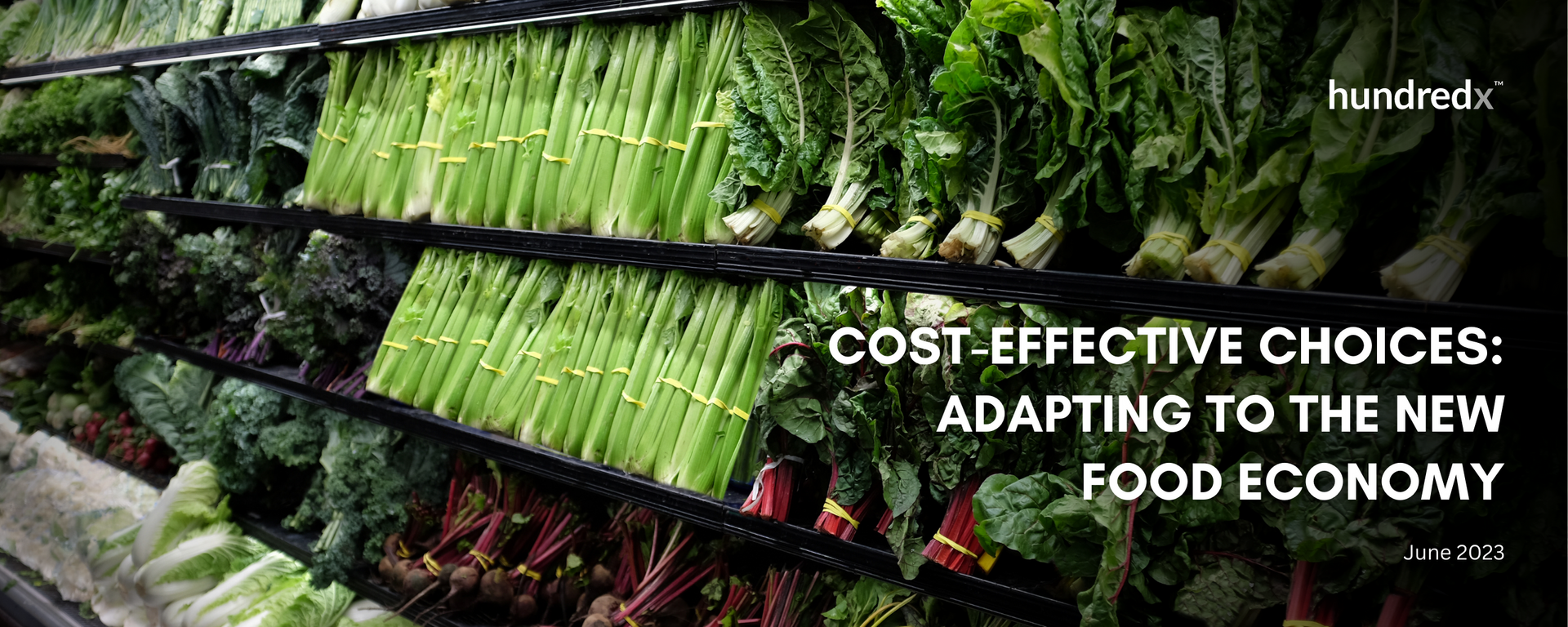
- Intent to Eat 1,2 has remained within a pretty tight range for most of the major food industries over both the last three months and year. However, it rose 7% from October 2022 through April 2023 for meal kit delivery services, much more than any other food industry.
- Grocery Purchase Intent remained stable over the past year, corresponding with stable customer sentiment 3 towards Price. Across the broader retail sector, customers are happier with grocery prices than those of many other retail industries. Discount stores, like Dollar Tree, e-commerce stores and superstores do a better job pleasing customers on price.
- Still, Purchase Intent increased notably for Harris Teeter and Market Basket over the past three months. Harris Teeter made several marketing upgrades, while Market Basket continues to please on price.
Meal kits gaining ground on rest of food while grocery more stable than most other retailers
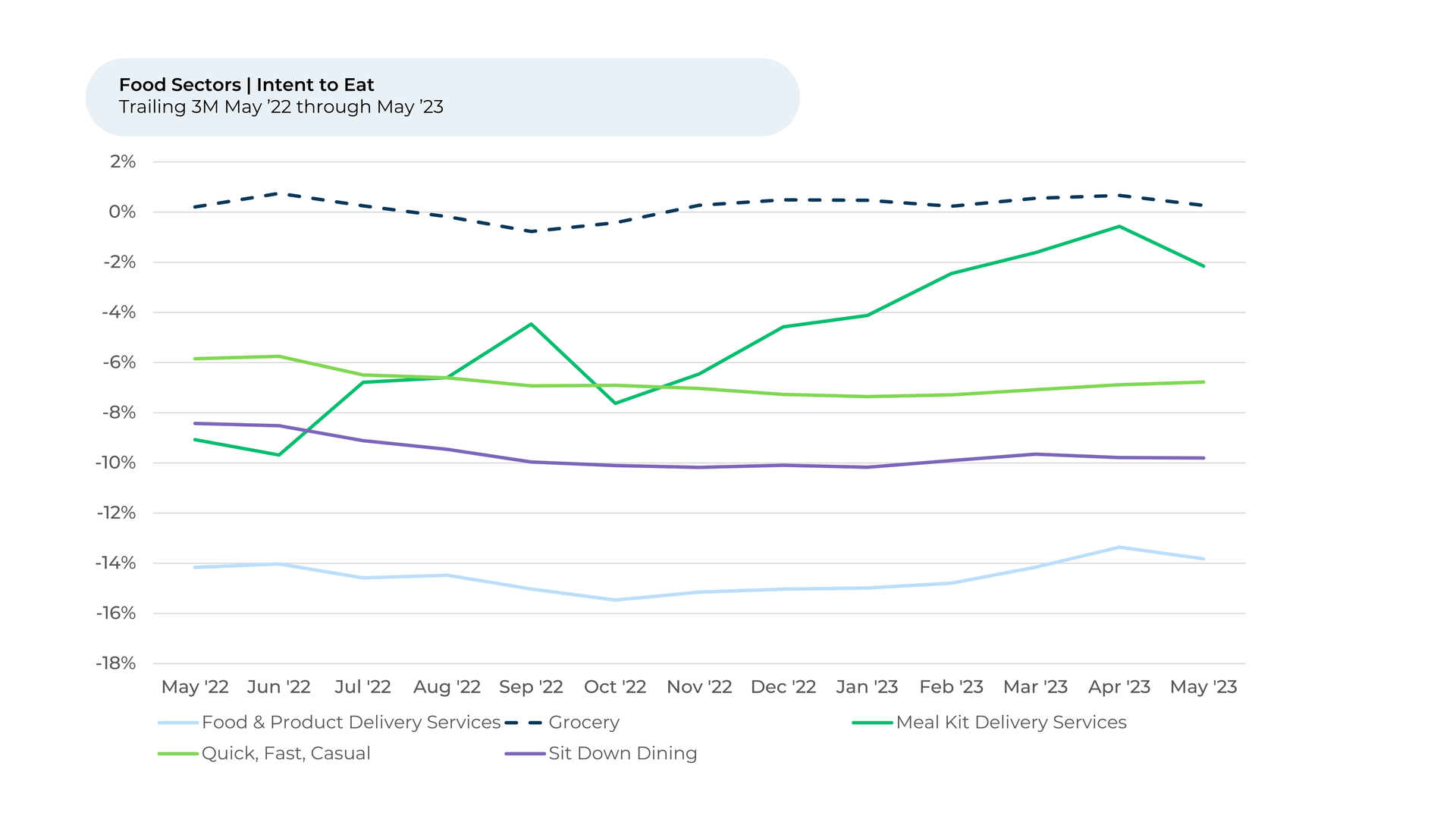
Meanwhile, Purchase Intent for the grocery industry has remained stable over three, six, and twelve-month periods. Grocery stores, along with superstores, have demonstrated resilience. They've maintained positive and stable Purchase Intent scores throughout the past year, suggesting that consumers still rely on these outlets for essential items.
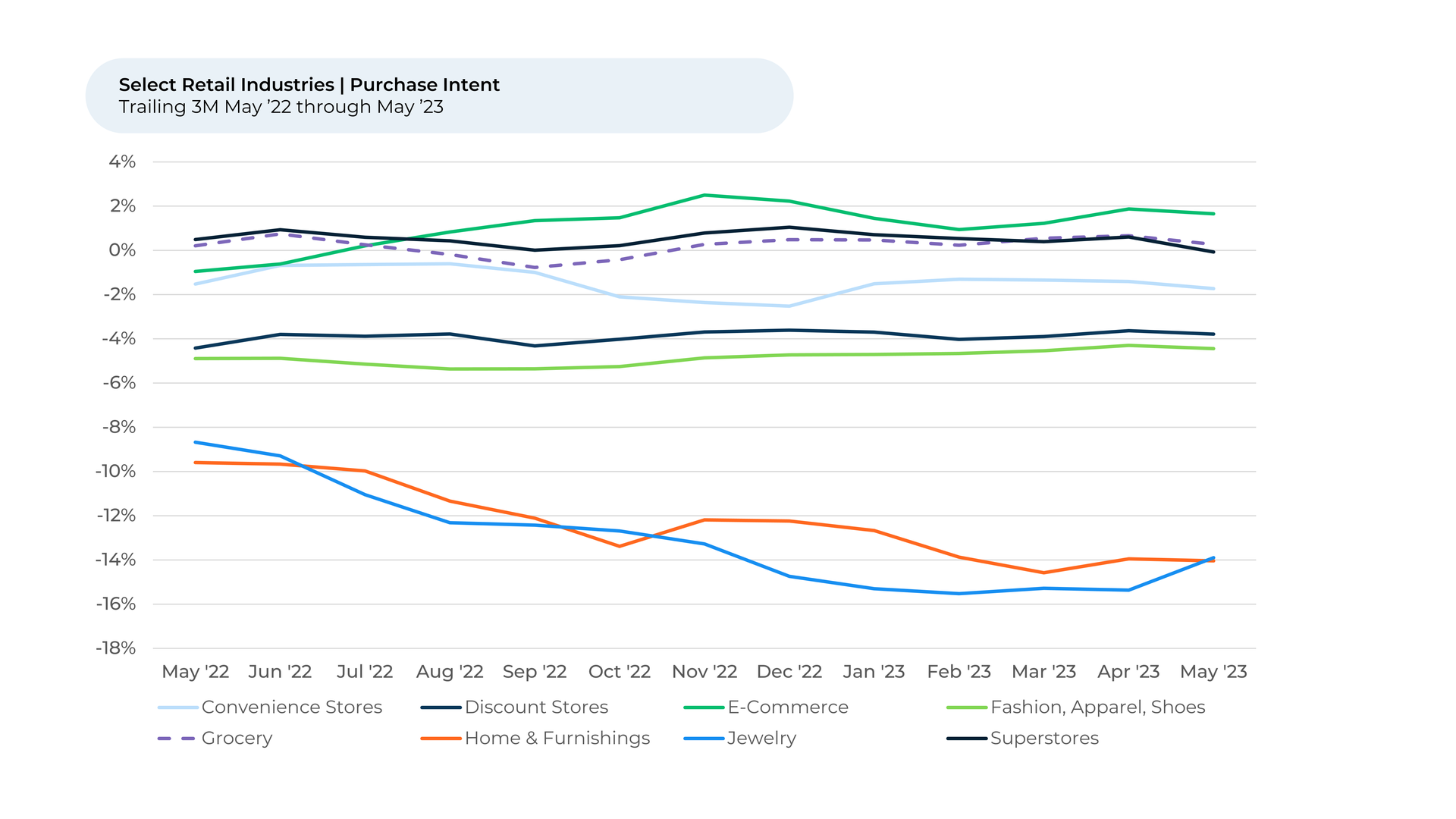
Price appears to be a significant factor driving these trends
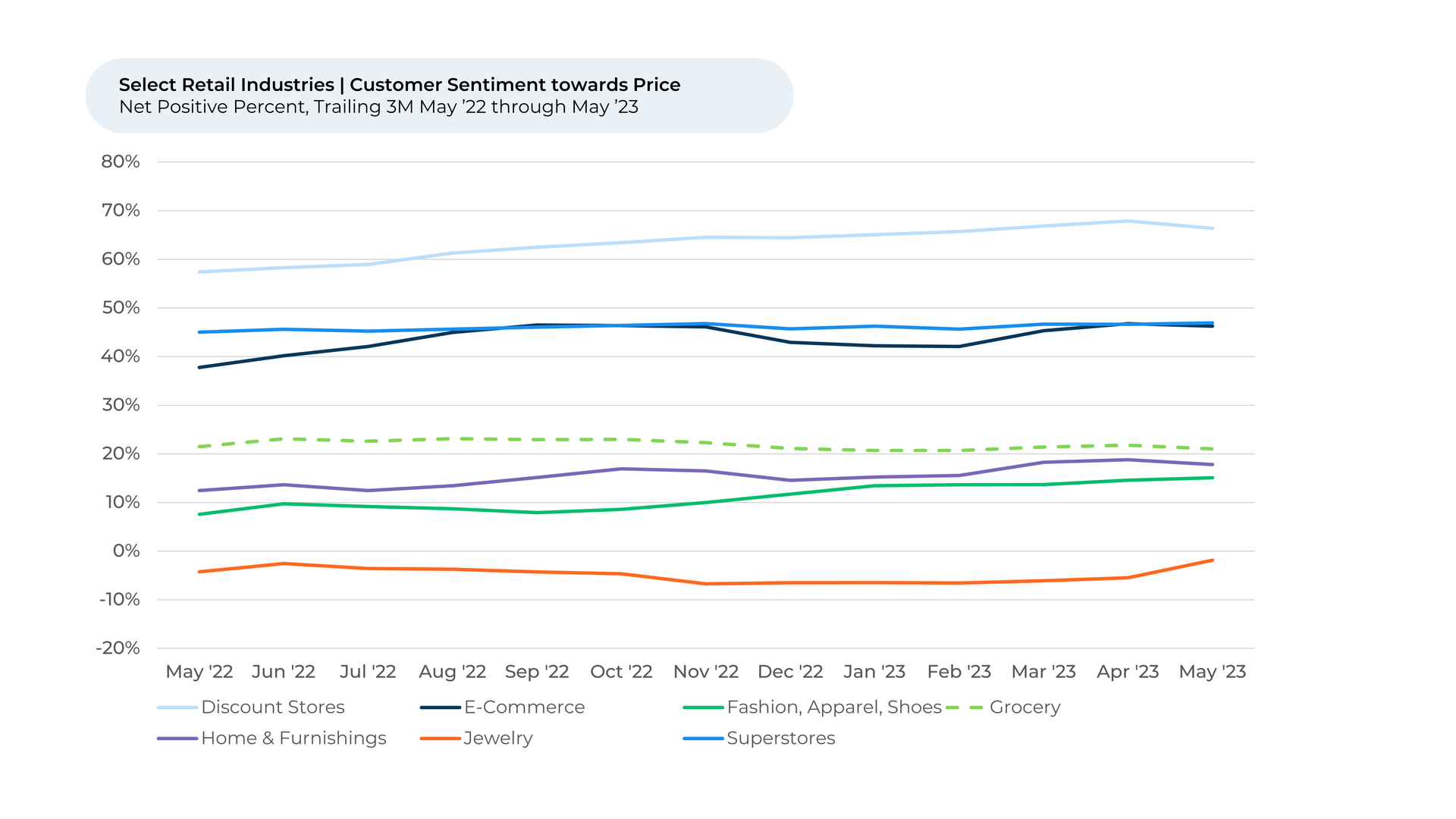
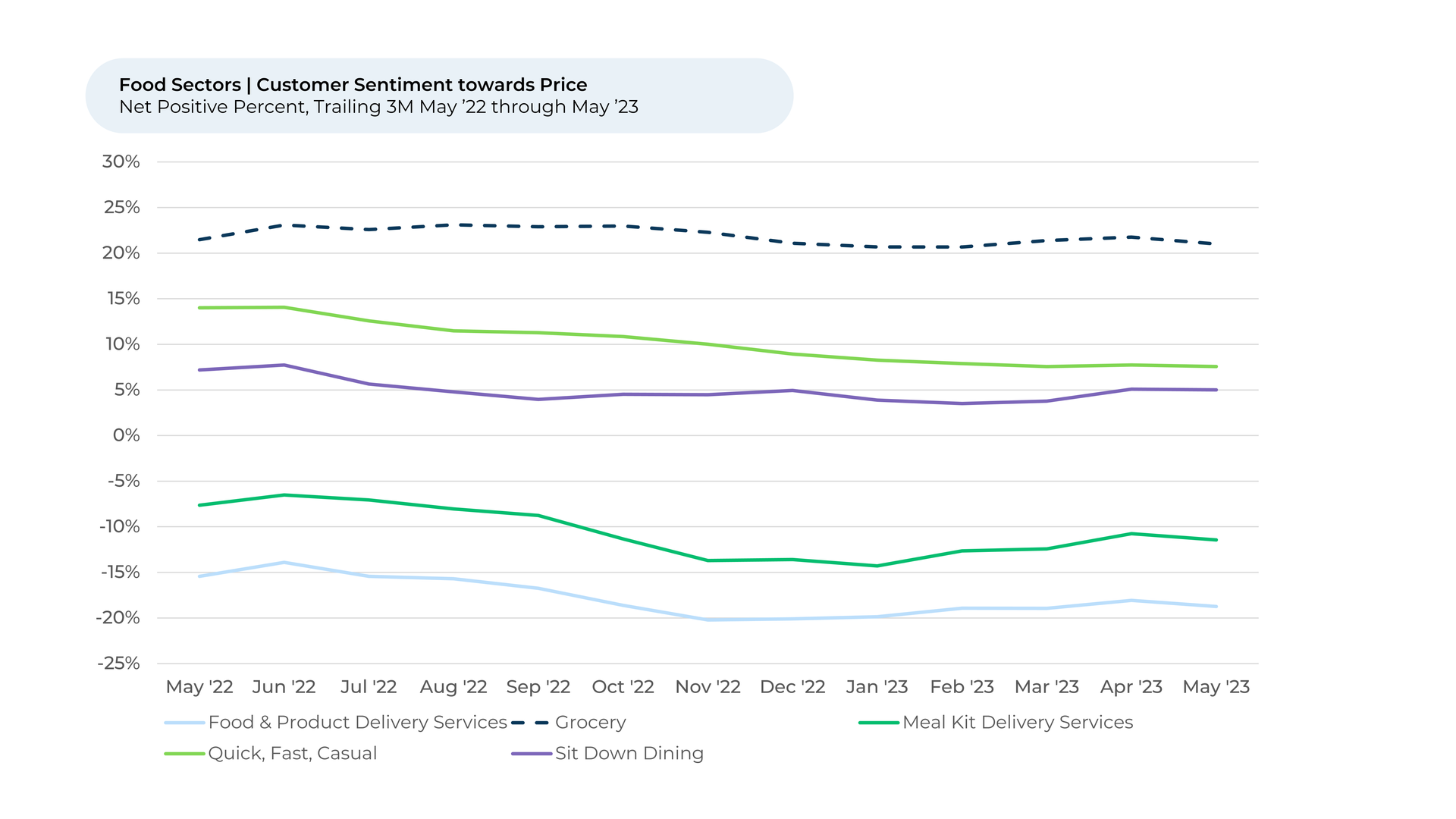
Harris Teeter saw the biggest Purchase Intent increase over the past three months
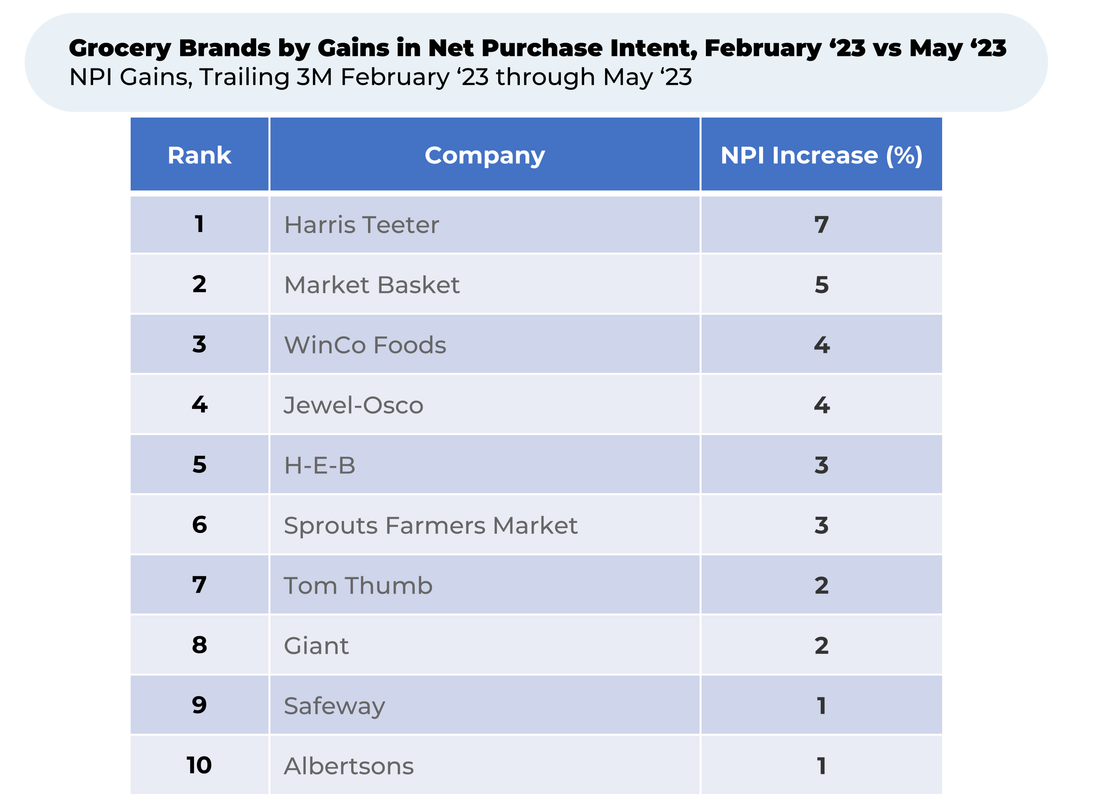
The Purchase Intent jump for Harris Teeter, which was acquired by Kroger in 2013, appears to be driven by its success increasingly pleasing its customers with its produce (+6% in sentiment), store services (+6%), and availability (+5%) since February 2023.
The modernization and marketing efforts seem to have paid off.
“Fresh produce and meats are where this store shines. They have the lowest prices for the best selection,” a Harris Teeter customer told HundredX in June.
Regularly recognized for its relatively low prices , Market Basket appears focused on keeping groceries affordable for its customers. In turn, its customers are showing their appreciation.

Another recently noted, “Market basket is a great store. It has everything needed at a good price with a good-sized inventory. Inflation has caused the prices of food to rise to the extreme. This store has gone up too but to a lesser degree.”
Despite the economic uncertainties and shifts in the market, consumers have found a way to adapt their food consumption behaviors to fit their needs. We will continue to stay close to the pulse of change in the industry, with future winners likely to be those that continue to deliver affordability and convenience to customers.
- Intent to Eat reflects a way to compare the future intentions of customers across various food-related industries. It captures:
- Loyalty Intent for Meal Kit Delivery Services, which is the percentage of customers who plan to keep using the service minus the percentage who intend to cancel. It also captures Visit Intent for Groceries, Usage Intent for Food Delivery, and Purchase Intent for the dining industries, which all represent the percentage of customers who expect to visit, use or spend more on a brand minus those who intend to visit, use or spend less.
- All metrics presented, including Net Usage Intent (Usage Intent), and Net Positive Percent / Sentiment are presented on a trailing three-month basis unless otherwise noted.
- HundredX measures sentiment towards a driver of customer satisfaction as Net Positive Percent (NPP), which is the percentage of customers who view a factor as a positive (reason they liked the products, people, or experiences) minus the percentage who see the same factor as a negative.
Strategy Made Smarter
HundredX
works with a variety of companies and their investors to answer some of the most important strategy questions in business:
- Where are customers "migrating"?
- What are they saying they will use more of in the next 12 months?
- What are the key drivers of their purchase decisions and financial outcomes?
Current clients see immediate benefits across multiple areas including strategy, finance, operations, pricing, investing, and marketing.
Our insights enable business leaders to define and identify specific drivers and decisions enabling them to grow their market share.
Please contact our team to learn more about which businesses across 75 industries are best positioned with customers and the decisions you can make to grow your brand’s market share.
HundredX is a
mission-based data and insights provider
. HundredX does not make investment recommendations. However, we believe in the wisdom of the crowd to inform the outlook for businesses and industries. For more info on specific drivers of customer satisfaction, other companies within 75+ other industries we cover, or if you'd like to learn more about using Data for Good, please reach out:
https://hundredx.com/contact
.
Share This Article



